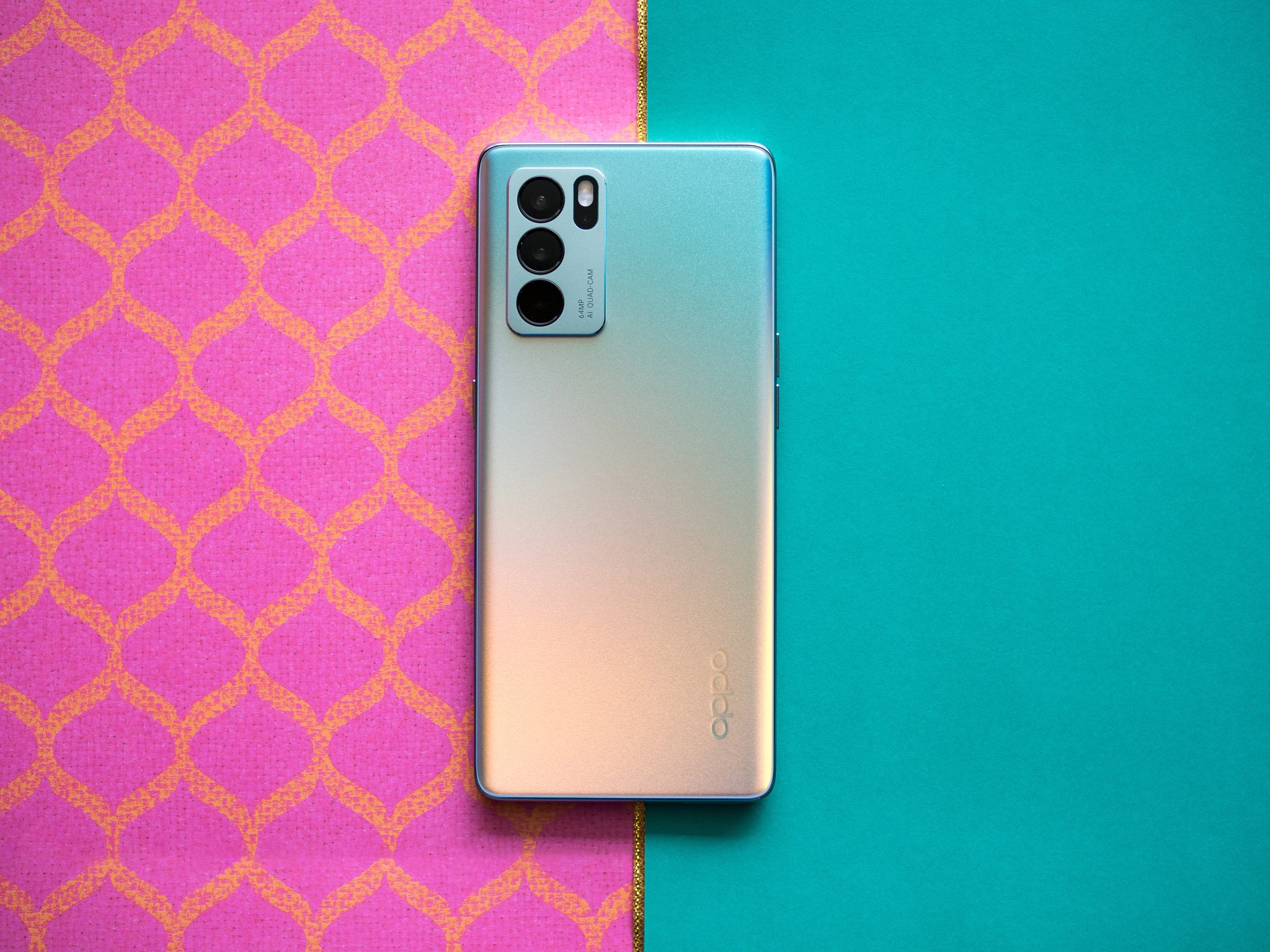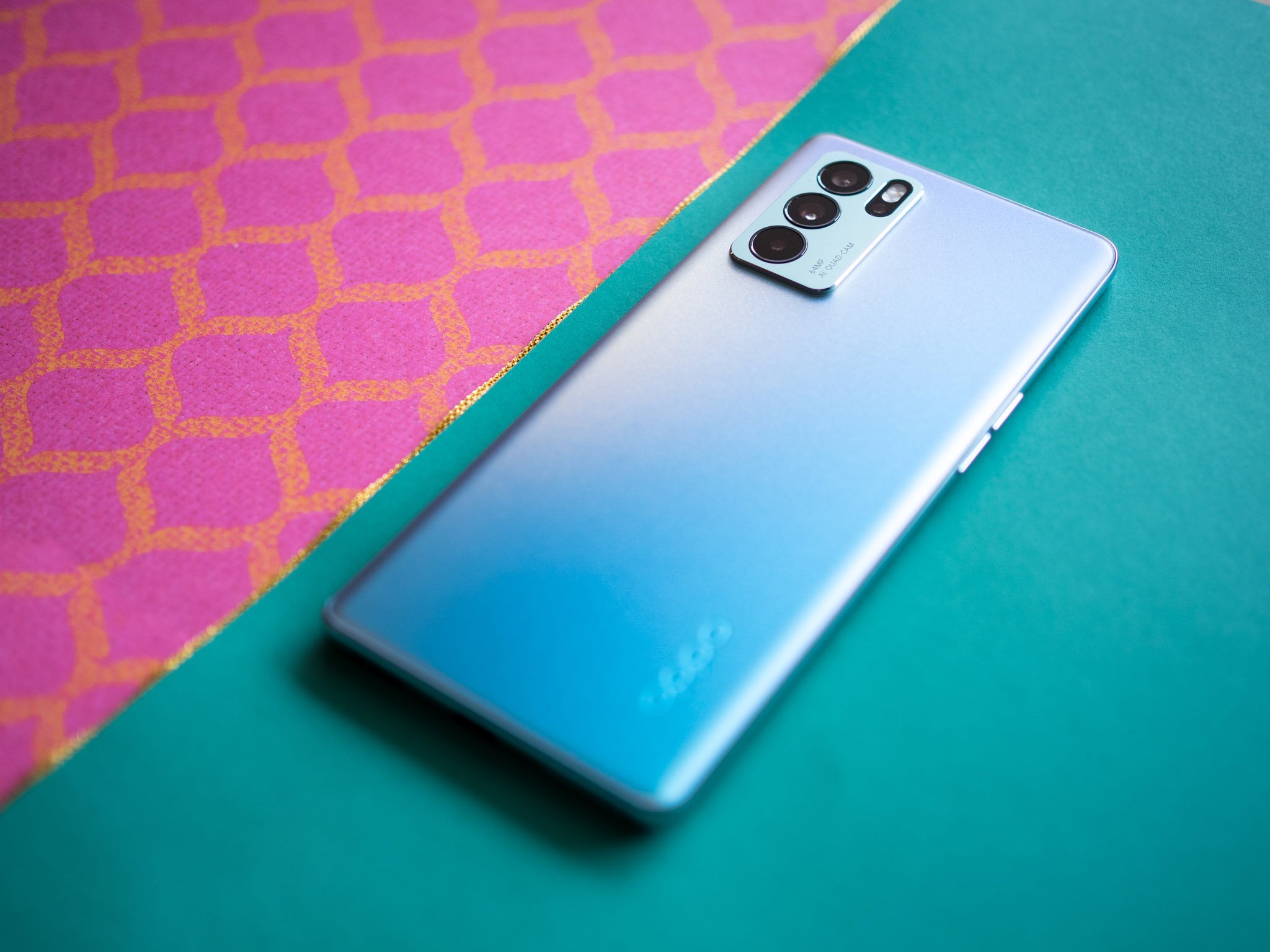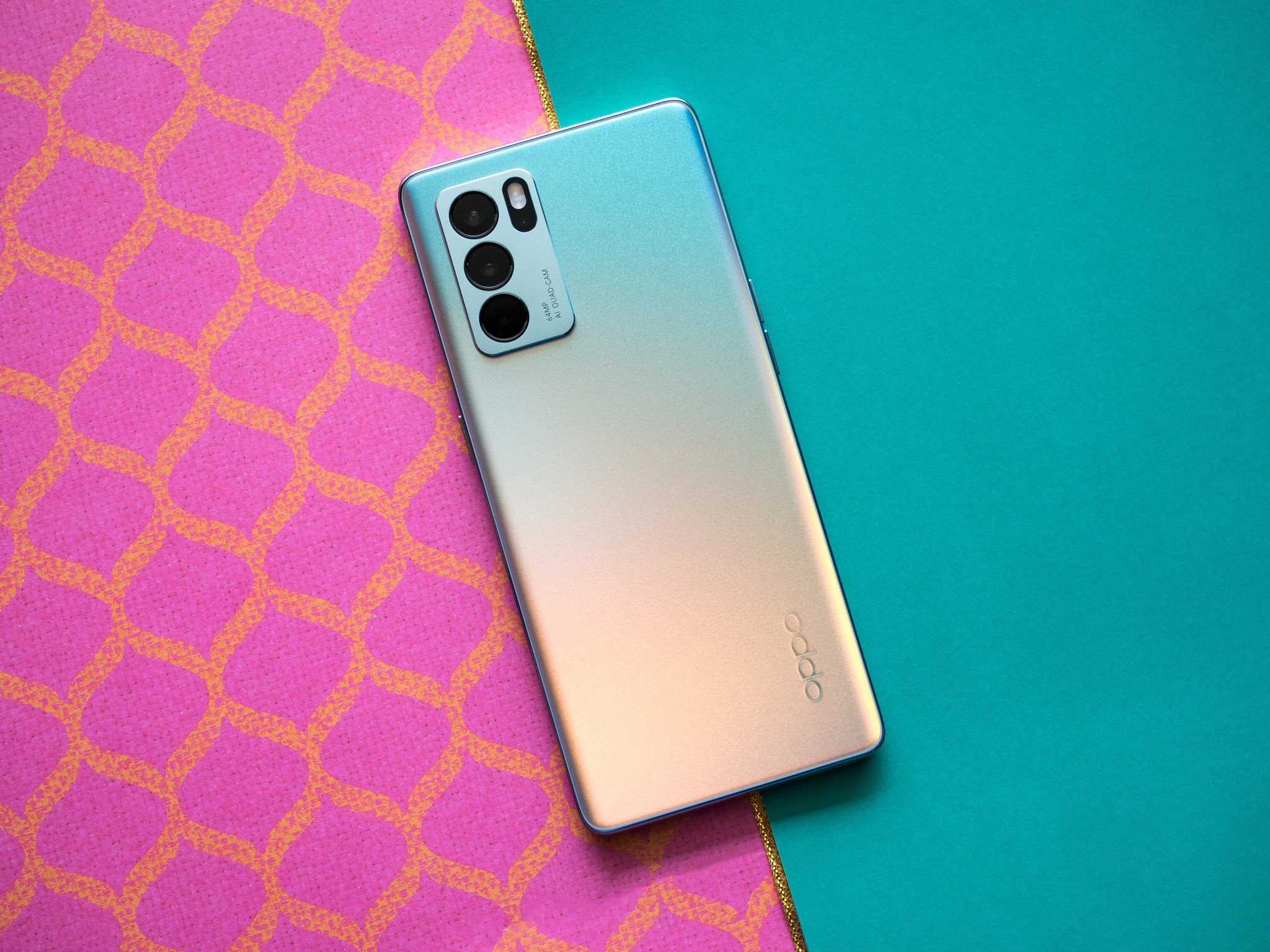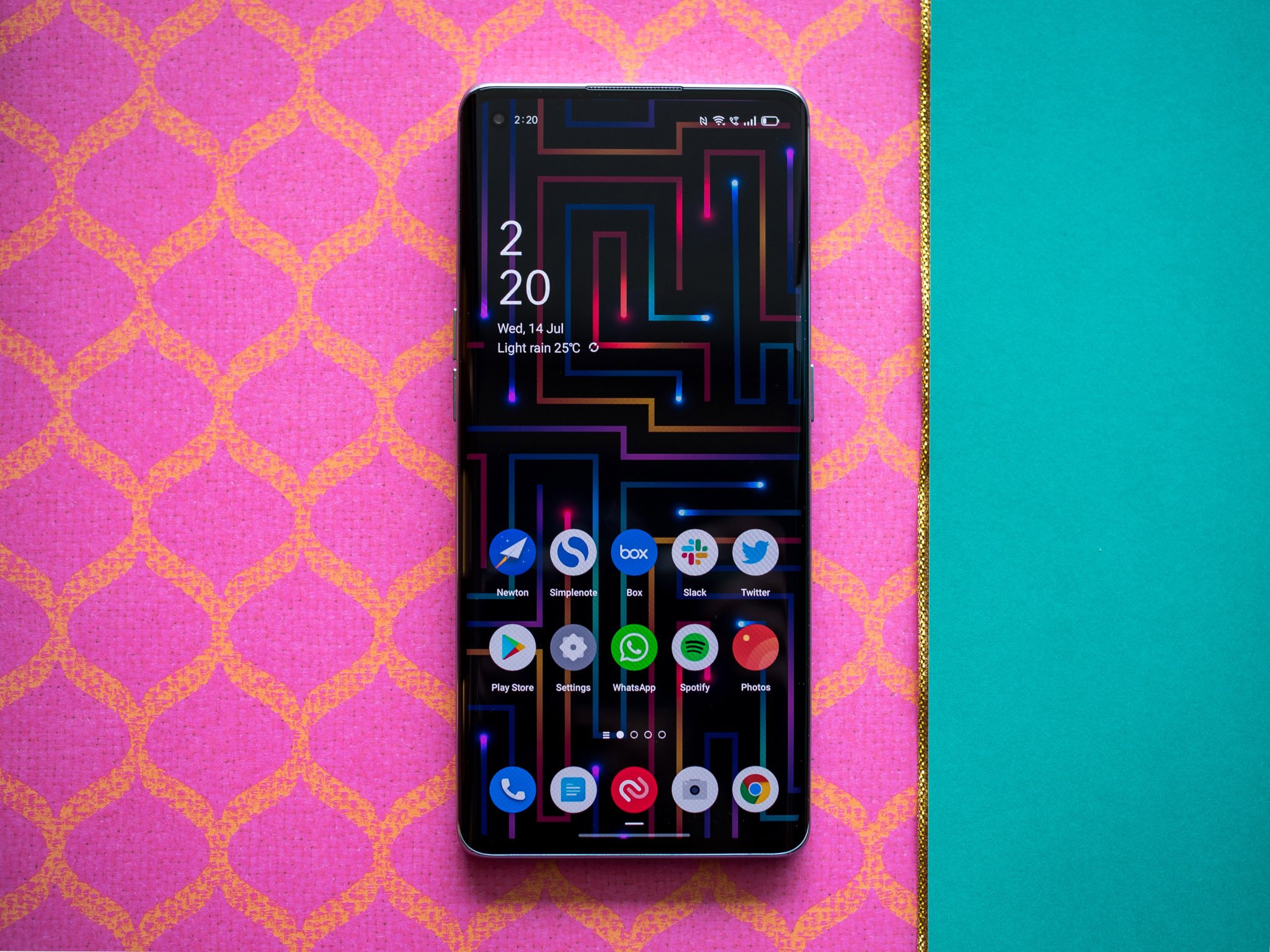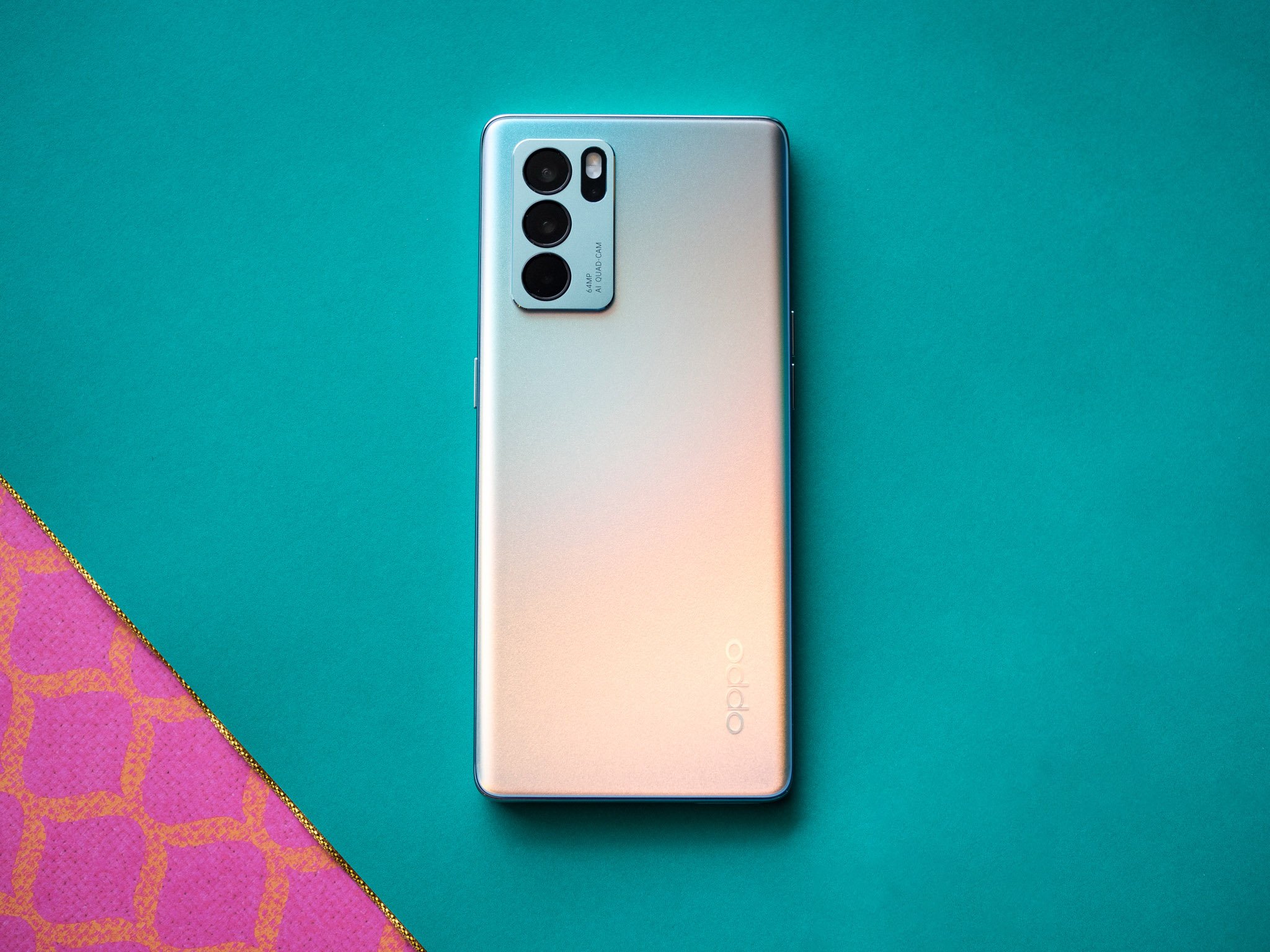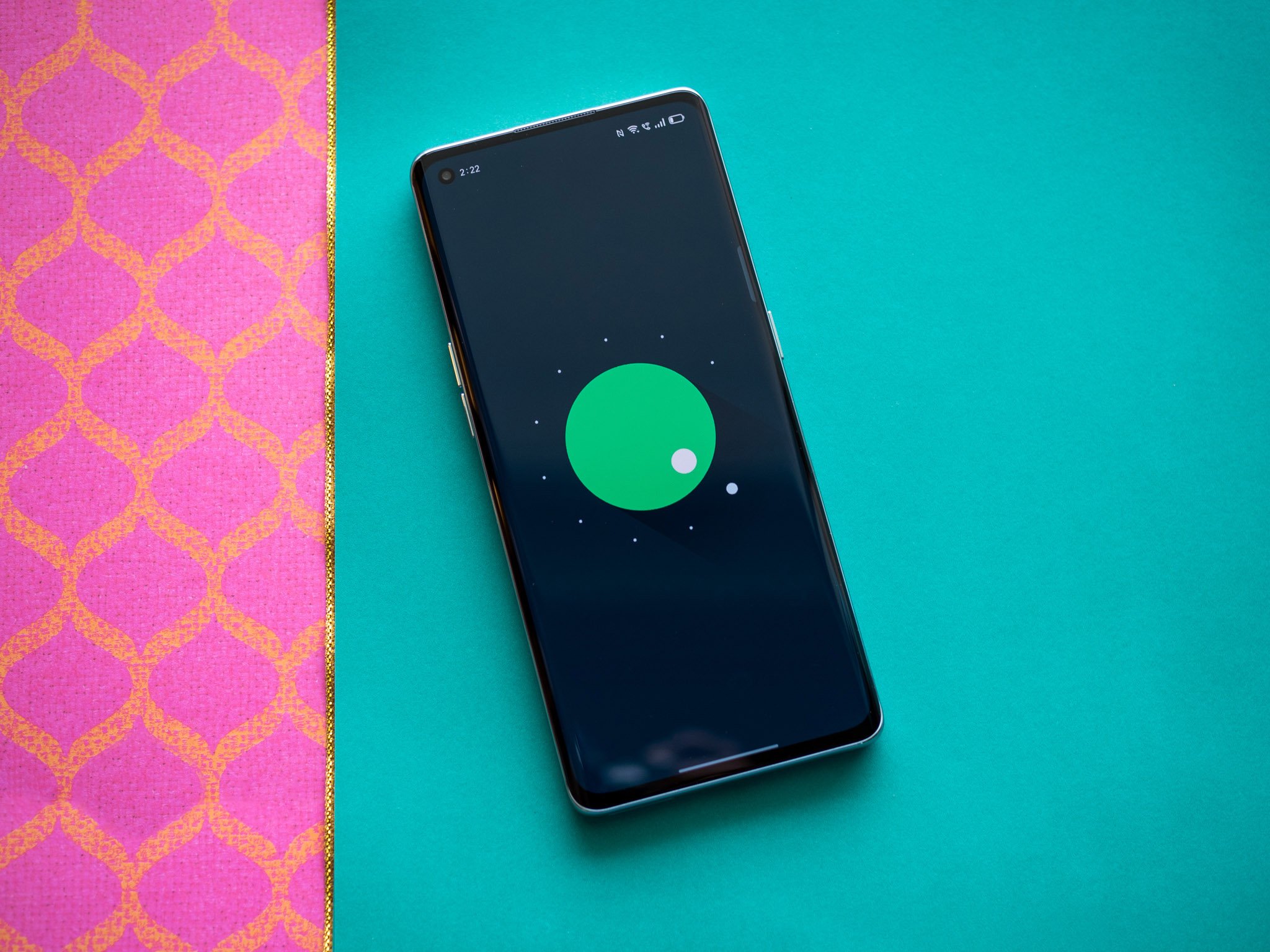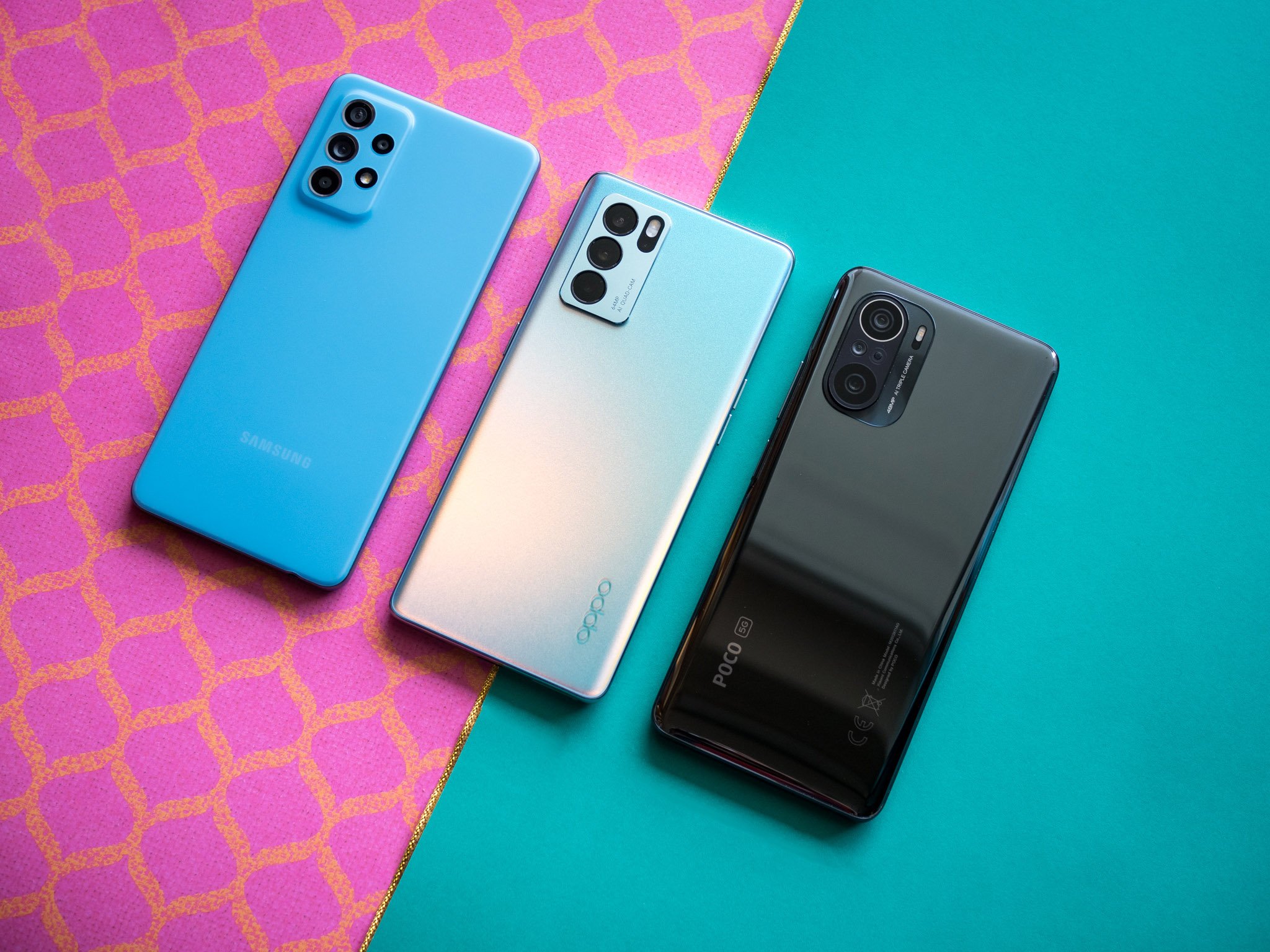OPPO Reno 6 Pro review: A great mid-ranger with a big problem
The Reno 6 Pro shows off the potential of the Dimensity 1200 - at a hefty price.
OPPO is doing all the right things in 2021; the Find X3 Pro is one of the best Android phones, and the Reno series is a viable alternative to the likes of the Galaxy A52. The Reno 5 Pro 5G debuted just six months ago, but its successor is already here.
The Reno 6 Pro is now available in global markets, and there are a few standout features: the MediaTek Dimensity 1200 platform offers the latest Cortex A78 cores, and there's a larger 4500mAh battery that uses 65W fast charging. As upgrades go, there isn't much to talk about here. The Reno 6 Pro shares the same 90Hz AMOLED screen, same 64MP camera and 32MP front shooter, and a similar design aesthetic as its predecessor. But the updated hardware should give it an edge over the Reno 5 Pro, and the marginally larger battery allows it to last longer.
Ultimately, the Reno 6 Pro is as iterative as updates get in 2021, but the fact that this phone serves as the foundation for the OnePlus Nord 2 makes it that much more interesting. The Nord 2 will feature the Dimensity 1200 chipset, similar battery with 65W fast charging, and uses the same chassis as the Reno 6 Pro albeit with a few tweaks to allow it to stand out.
Essentially, the Reno 6 Pro gives us an early look at OnePlus' upcoming mid-ranger, but it's not all smooth sailing. With the phone costing a premium over its predecessor, it misses out on a key attribute in this category: value. So let's take a look at what's new, and whether you should pick up the phone.
OPPO Reno 6 Pro:OPPO Reno 6 ProBottom line: The Reno 6 Pro combines an iridescent gradient pattern with powerful hardware. The 90Hz AMOLED panel is wonderful in daily use, you get the same level of performance as flagship phones, and the 64MP lens takes standout photos. The software needs work - OPPO's update schedule is glacial - but the biggest issue is pricing; there are far too many alternatives at this price point that give you more for your money.
The Good- Gorgeous design with an attractive gradient
- Sublime 90Hz AMOLED screen
- Flagship-tier hardware
- Great primary camera
- All-day battery life with 65W charging
- Costs too much for what you're getting
- No stereo sound
- No IP rating
- No wireless charging
The Reno 6 Pro debuted in China at the end of May, and made its way to India on July 14, 2021. The phone is available in 8GB/128GB and 12GB/256GB variants, and is sold in two color options: Aurora and Black. The device is now up for pre-order in India, with sales kicking off July 23 for 39,990 ($537). That's for the 12GB/256GB version; at this moment, the 8GB model isn't coming to India.
OPPO Reno 6 Pro Design and displayFrom a design point of view, the Reno 6 Pro is indistinguishable from its predecessor. It has the same chamfered sides, the same svelte 7.6mm frame, and a camera housing that's nearly identical - the flash module is now closer to the fourth camera module, but the large rings around the three main cameras are the same across both devices. The camera module itself is fashioned out of plastic, and the design reminds me of the OnePlus 9R.
The Reno 6 Pro has the same design as its predecessor but with an exciting new pattern.
Although the design itself hasn't changed too much, the Reno 6 Pro is one of the best-looking mid-range phones you can buy today. The sleek profile combined with that gorgeous iridescent pattern - there's a new Reno Glow design this time - makes the phone stand out, and the ultra-thin bezel maximizes screen real estate.
As for that Reno Glow gradient, the phone now shifts between various blue and gold hues according to light hitting its surface, and it makes the back shimmer. I'm a fan of gradient designs, and I like how the device catches the light at various angles. The matte finish makes it easier to hold and use the phone as well, and if you're in the market for a device that turns heads, this will do just fine. If you think the design is too aggressive, the phone is available in a more somber color option.
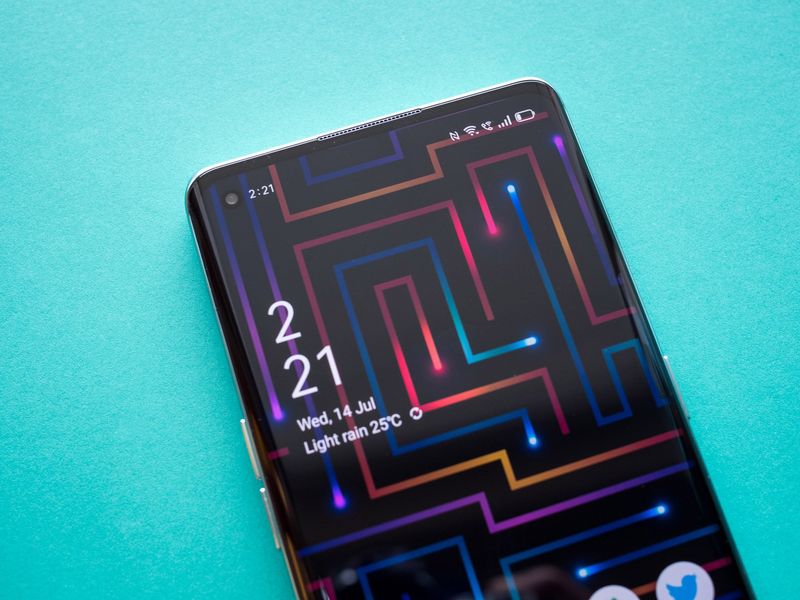
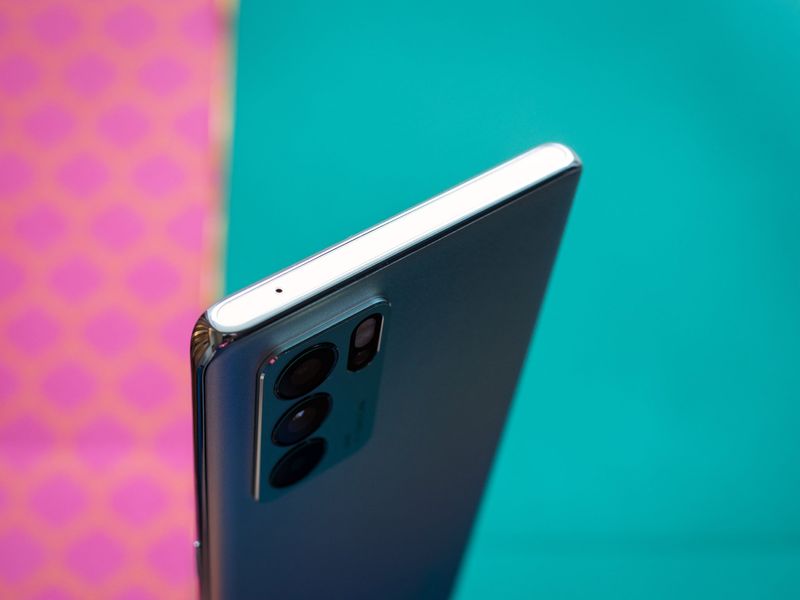
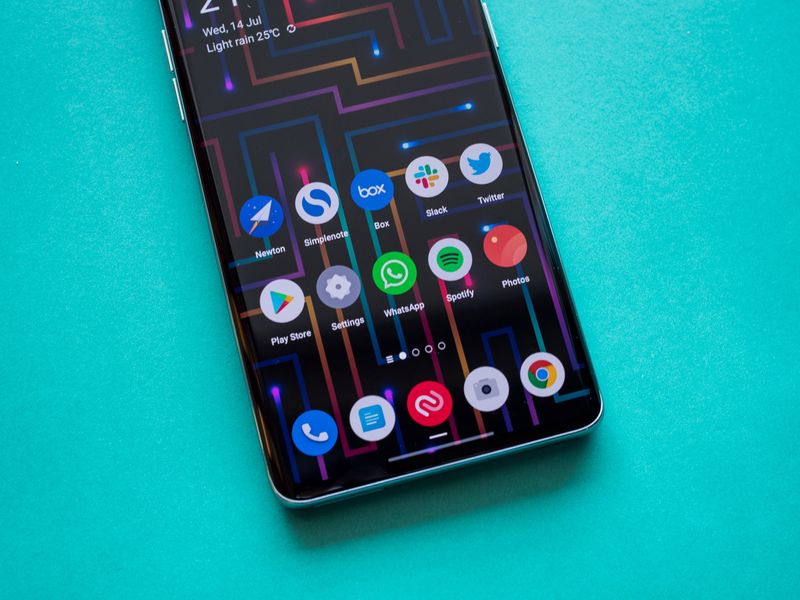
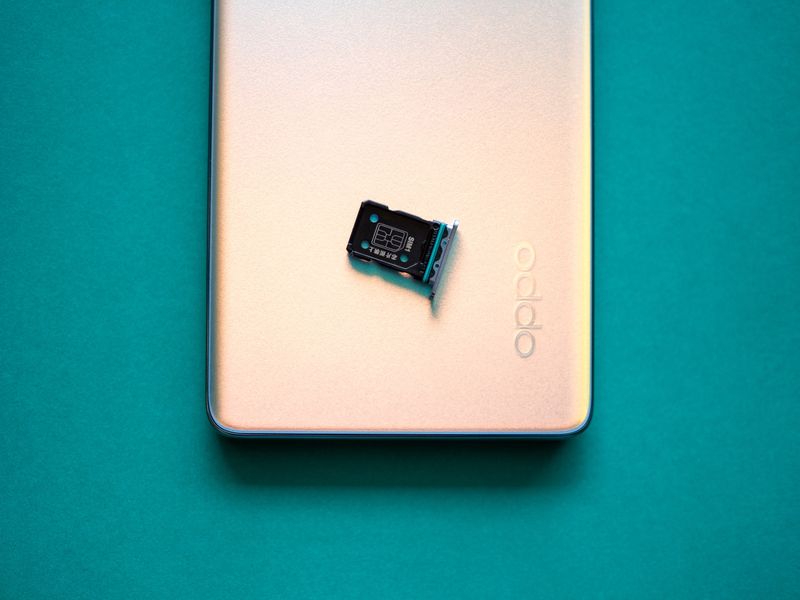

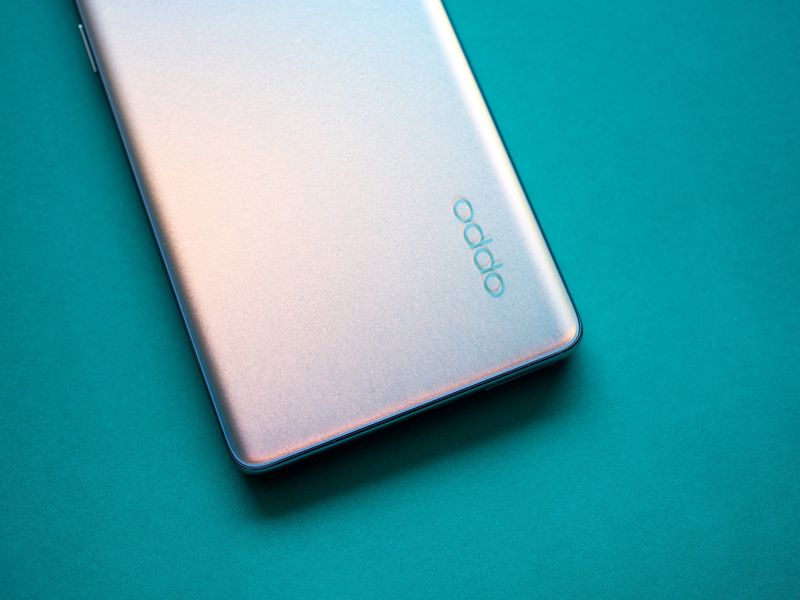

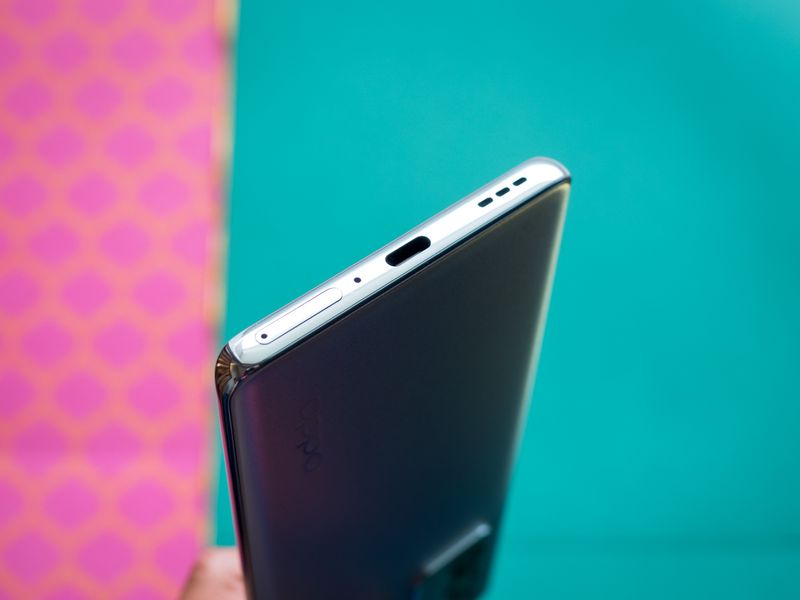
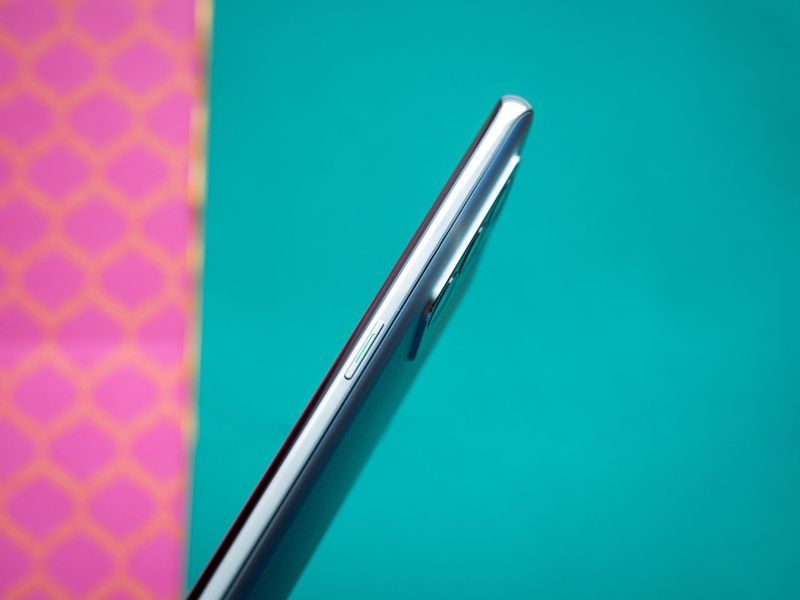
Because the Reno 6 Pro has a larger 4500mAh battery, its weight has been increased by a nominal 4g to 177g; it is still one of the lightest phones in this category. You'll find the power button to the right and the volume rocker to the left, with the primary speaker tucked away next to the USB-C charging port. As is now the case for most mid-range phones, you won't find a 3.5mm jack here.
Coming to the display side of things, there isn't too big a difference over the Reno 5 series. The Reno 6 Pro uses a 90Hz Samsung-made AMOLED screen with brightness that goes up to 800nits when viewing HDR10 content. The phone holds up admirably in terms of brightness - I didn't notice any issues even under bright glare - and thanks to that AMOLED panel, colors look incredible.
And just like the Reno 5 Pro, you get a Gorilla Glass 5 layer on the screen that offers a decent level of protection against tumbles and scratches. Because not much has changed, the Reno 6 Pro also misses out on stereo sound. With even budget phones picking up some form of stereo speakers these days, this is a big omission from OPPO. The single speaker sounds good enough in its own right, but a stereo configuration would have made a much better option, particularly considering how much the phone costs.
OPPO Reno 6 Pro PerformanceWhile OPPO hasn't tweaked the overall formula too much with the Reno 6 Pro, one area where the device has picked up a considerable upgrade is the internal hardware. The phone is powered by MediaTek's Dimensity 1200 platform, featuring one Cortex A78 core that goes up to 3.0GHz, three A78 cores at 2.42GHz, and four energy-efficient A55 cores at 2.0GHz.
| Specs | OPPO Reno 6 Pro |
|---|---|
| Software | ColorOS 11, Android 11 |
| Display | 6.55-inch 90Hz AMOLED |
| Chipset | 3.0GHz Dimensity 1200 |
| RAM | 8GB/12GB |
| Storage | 128GB/256GB |
| Rear Camera 1 | 64MP f/1.7 (primary) |
| Rear Camera 2 | 8MP f/2.2 (wide-angle) |
| Rear Camera 3 | 2MP f/2.4 (macro) |
| Rear Camera 4 | 2MP f/2.4 (portrait) |
| Front Camera | 32MP |
| Connectivity | Wi-Fi 6, BT 5.2, NFC |
| Battery | 4500mAh, 65W |
| Security | In-screen fingerprint |
| Colors | Black, Blue, Aurora |
| Dimensions | 160 x 73.1 x 7.6mm |
| Weight | 177g |
There's also a nine-core Mali-G77 GPU under the hood, and the beefier cores combined with increased clocks give the Reno 6 Pro a noticeable boost in performance over its predecessor. I used the phone for just under two weeks and didn't see any slowdowns whatsoever. In fact, in most day-to-day use cases, it is on par with flagship designs like the Snapdragon 870.
It's a testament to MediaTek's efforts over the last two years that it is able to create a mid-range platform that can measure up to the best that Qualcomm has to offer; it's no wonder that the Nord 2 is using the Dimensity 1200 in lieu of a Snapdragon chipset.
There's no shortage of RAM or storage either, with the base model offering 8GB of RAM and 128GB of storage. Like its predecessor, the Reno 6 Pro comes with Wi-Fi 6 connectivity, and gets a newer Bluetooth 5.2 modem. There's also NFC and AptX HD as standard, and one feature that OPPO absolutely nailed is the haptics; the vibration motor delivers fine-tuned feedback and is one of the best in this class.
As for battery life, I easily got a day's worth of use out of the 4500mAh battery, averaging just under five hours of screen-on-time over the course of 18 hours. Battery life hasn't been an issue for most 2021 phones, and the Reno 6 Pro continues in the same vein; you shouldn't have to charge this phone before the day's out even with heavy use.
And when you do need to charge it, there's 65W fast charging that fully charges the battery in under 35 minutes. My one quibble is that the charger itself doesn't work over the USB PD protocol, meaning you won't be able to charge other devices with it. Another omission on the Reno 6 Pro is wireless charging, but it isn't too big a miss considering there are very few mid-range phones that have the feature.
OPPO Reno 6 Pro ImagingJust like the design, not a whole lot has changed on the camera side of things. The Reno 6 Pro features a 64MP f/1.7 primary lens along with an 8MP wide-angle module, 2MP macro, and 2MP portrait lens. There's the same 32MP shooter at the front as well, and with the device, OPPO is positioning video as a differentiator.
There's a new bokeh video mode, but the Reno 6 Pro doesn't stand out from its predecessor.
The Reno 6 Pro has a new feature called Bokeh Flare Portrait Video that offers cinematic bokeh when recording video. The feature lets you set the bokeh level and relies on AI to find light sources in the background and create bokeh spots, and it works pretty well in real-world use. But my biggest quibble on the video front is that the phone is still limited to 4K at 30fps with no stabilization.
The resolution goes down to 1080p if you want to use the built-in EIS, but the fact that the device is positioned as a video-first option while missing these table stakes features is a big letdown. There are phones in this category that offer 8K video at 30fps and 4K at 60fps with stabilization and HDR, and by omitting these features, the Reno 6 Pro is on the backfoot. Furthermore, the camera needs access to your phone state; it will not work if you deny access. That isn't normally the case for most phones, so I'm not entirely sure why OPPO is asking for it here.
As for the camera interface itself, you'll find the shooting modes laid out in a ribbon at the bottom, toggles for AI, flash, timer, HDR, and Google Lens, and switching between the various lenses and zoom levels. The phone is fast to dial in on a subject and there's no delay when shooting stills. You'll find plenty of shooting modes tucked away behind the More tab, including a manual mode that gives you granular control over your shots.
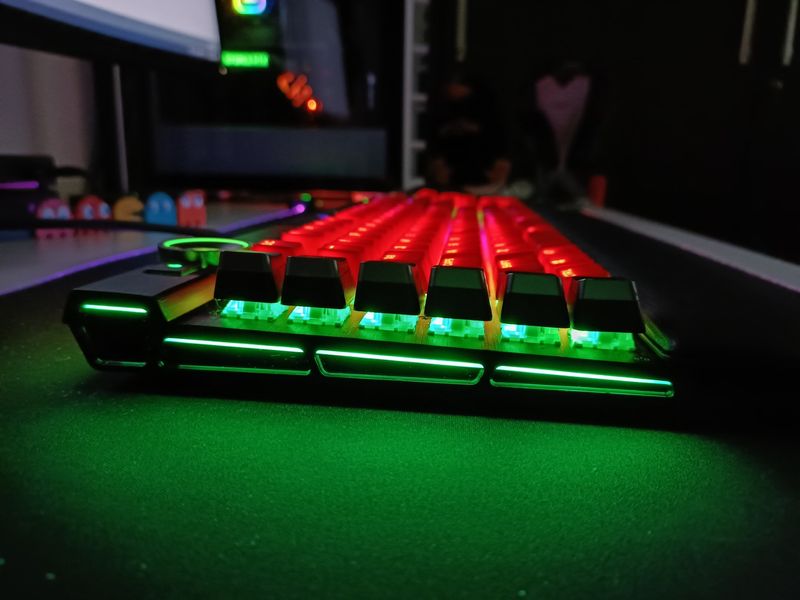





The 64MP camera is a known quantity, and just like the Reno 5 Pro, it takes fantastic photos in just about any lighting condition. The resultant images have plenty of detail, little to no noise levels, and tend to have an oversaturated quality to them - making them look great when shared on social media platforms. The phone does a great job in low-light as well, retaining highlights and color fidelity while minimizing noise. You will notice visible grain at the edges in a few low-light shots taken in little to no ambient lighting, but overall the phone does a good job preserving the detail.
The 8MP wide-angle lens is great in daylight, delivering photos with a similar color profile as the main lens. However, it struggles to take decent shots in low-light conditions. As for the 2MP macro, you're better off not using the lens at all; the fixed-focus module requires a lot of effort and the resultant shots don't pass muster. Video recording is also decent enough in its own right, but there is noticeable jitter in low-light scenarios, particularly in 4K.
Overall, the Reno 6 Pro continues in a similar vein as its predecessor when it comes to taking photos, and I can't help but feel that OPPO should have done more on the video front to make the phone stand out.
OPPO Reno 6 Pro SoftwareOPPO changed the look and feel of ColorOS over the last two years, and the result is an interface that feels modern and polished. The phone runs ColorOS 11.3 based on Android 11, and the new version picks up a few interesting features taken from OxygenOS. There's a new gaming mode that shares the same interface as OxygenOS, and you even get an APD style that's identical to Canvas AOD.
ColorOS 11 gets a lot right, but it is still lacking when it comes to updates.
ColorOS 11 also has robust customization tools, and it strikes a good balance in terms of features. There's a quick launch mode that lets you launch actions and apps as soon as you unlock your phone. You can set it up in the settings, and it works the following way: after you unlock the phone using the in-screen module, continue pressing down in that area even after you get to the home screen. Then you'll see a menu that holds up to five apps or actions, and you can drag your finger over to the corresponding icon to launch that app or action.
I don't necessarily see the value of it when it comes to launching an app - there's a delay of a few seconds before the menu pulls up, so you're better off unlocking the phone and launching the app directly. But it is useful for performing actions, like calling a contact or adding an event to your calendar. With OnePlus now using the ColorOS codebase, look for features like these to make their way to the Nord 2 and upcoming OnePlus phones.
The biggest issue with ColorOS 11 is the update frequency. OPPO continues to lag behind its rivals in this particular area, and that needs to change if it wants to contend in the mid-range segment against the likes of Samsung.
OPPO Reno 6 Pro The competitionThere's an overwhelming amount of choice if you're in the market for a mid-range phone right now. The Realme X7 Max is a great alternative to the Reno 6 Pro as it also features the Dimensity 1200 and the same 64MP camera at the back. You also get a 120Hz AMOLED screen, stereo sound with a 3.5mm jack, and 4500mAh battery with 50W fast charging. There's no difference in the software either, with Realme UI featuring ColorOS as the foundation. Starting out at 26,999 ($360), the X7 Max undercuts the Reno 6 Pro by a considerable margin.
Then there's the Nord 2 to consider. The phone features near-identical hardware to the Reno 6 Pro, and it will run OxygenOS 11.3, the first OxygenOS build that's based on the ColorOS codebase. We'll have to wait and see how the software differs to earlier iterations of OxygenOS (review coming out soon), but from a hardware point of view, there is a lot to like with the Nord 2. The OnePlus 9R is also a stellar alternative to the Reno 6 Pro. It has more powerful hardware, a 120Hz AMOLED screen, cleaner interface with less bloatware, and will get more software updates.
Of course, if you want a more mainstream choice, the Galaxy A52 continues to be a fantastic overall option. The phone has a 90Hz panel, and while the Snapdragon 732G doesn't measure up to the MediaTek Dimensity 1200, it is decent enough for most day-to-day use cases. The A52 also has great cameras, modern interface with more features than you'll use, and it will get three Android updates.
OPPO Reno 6 Pro Should you buy?You should buy this if ...- You want a sleek phone with an attractive design
- You're looking for flagship-tier hardware
- You want reliable cameras
- You need all-day battery life with 65W wired charging
- You want a phone with a good value
- You want fast software updates
- You need wireless charging
Overall, the Reno 6 Pro continues OPPO's push into the mid-tier segment. With the phone launching just six months after the introduction of the Reno 5 series, there's nothing here that truly stands out. That said, the Dimensity 1200 offers a decent performance increase, and the battery increase alleviates any worries about the phone running out of charge before the end of the day.
3.5 out of 5So while it may not be as revolutionary a change as the Reno 5 series, the Reno 6 Pro nails the basics with its 90Hz AMOLED screen, stellar 64MP camera, and modern ColorOS 11 interface. The same problems that plagued the Reno 5 Pro have carried on here as well; you're not going to get updates on time, there's no ingress protection, and you miss out on wireless charging as well.
Ultimately, the pricing makes it hard to recommend the Reno 6 Pro. There are far too many devices that offer beefier hardware, better cameras, and much better value. OPPO's phones don't usually deliver the best value, with the manufacturer instead relying on its offline network to push sales, but even in that context the Reno 6 Pro feels overpriced. The decision to only offer the 12GB/256GB model in the country isn't a smart one.
That said, the Reno 6 Pro isn't a bad phone by any measure - it is the best OPPO mid-ranger I've used yet - but it costs too much for what it ultimately offers. If you like what you see with the device, do yourself a favor and pick up the Reno 5 Pro or wait for the Nord 2 and POCO F3 GT.
OPPO Reno 6 ProBottom line: The Reno 6 Pro has the ingredients for a great mid-range phone, including a vibrant screen, powerful hardware, and standout cameras. But a high price tag ultimately makes this a non-starter.
